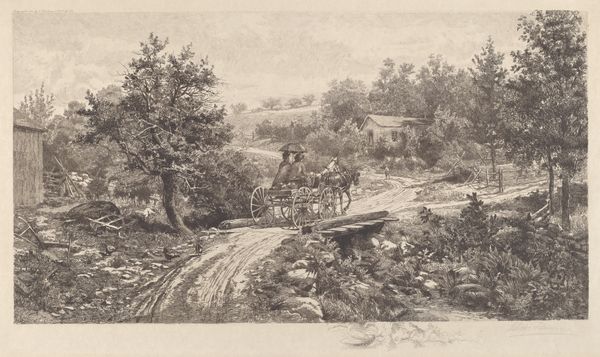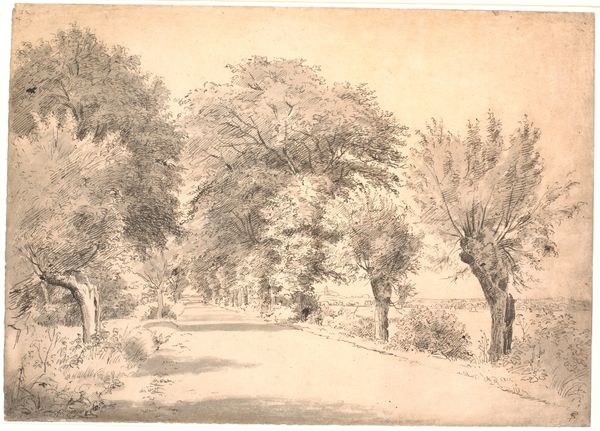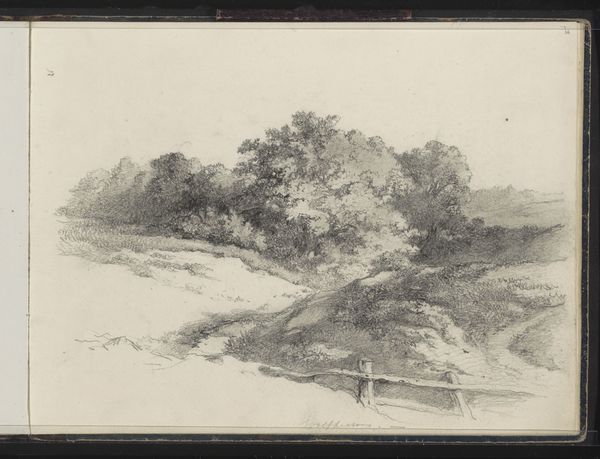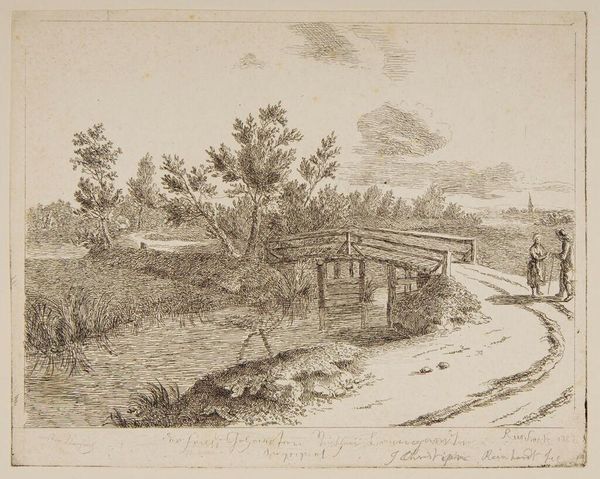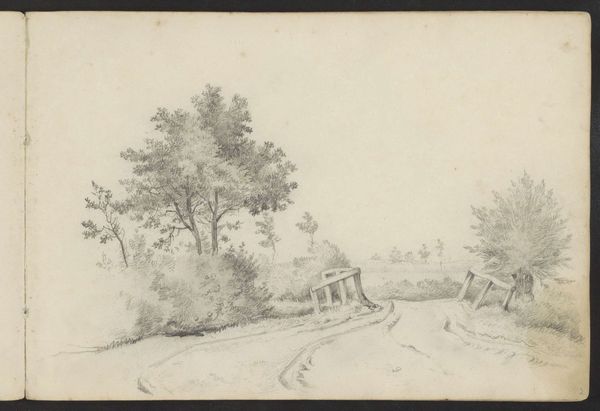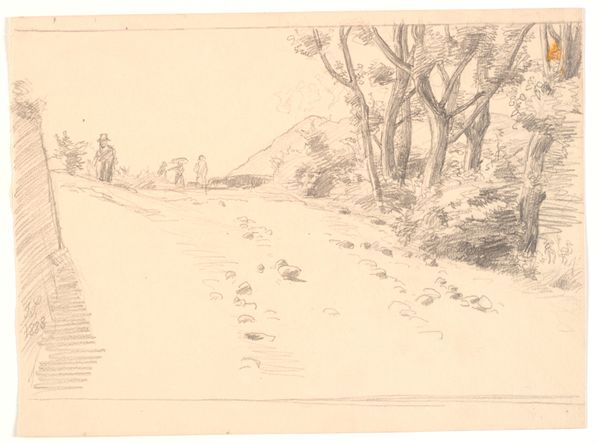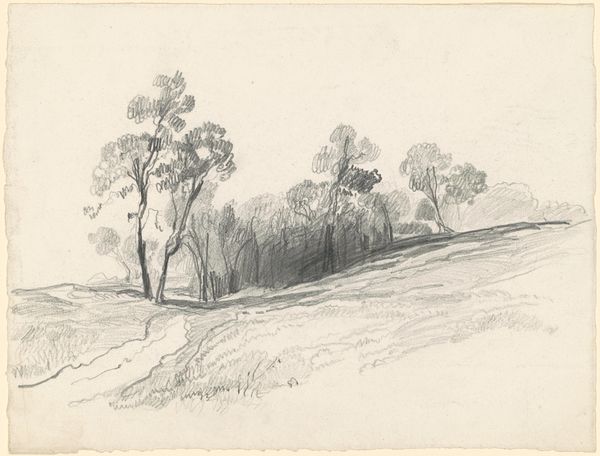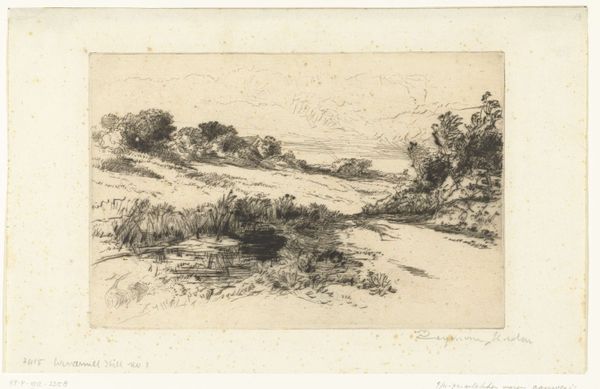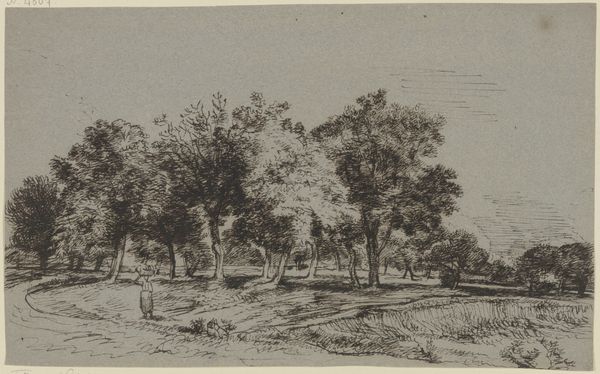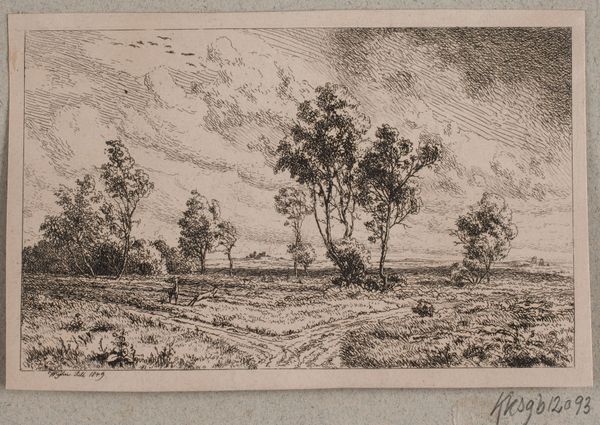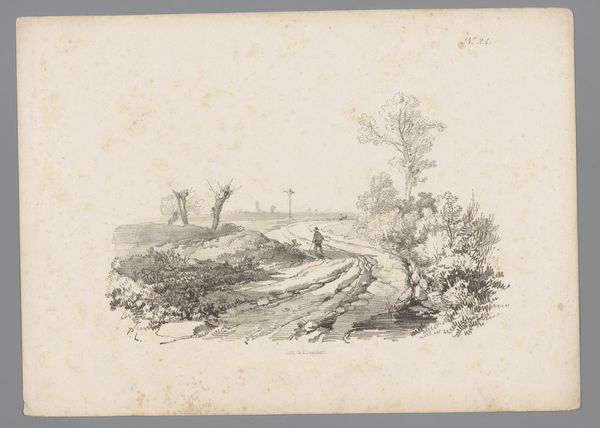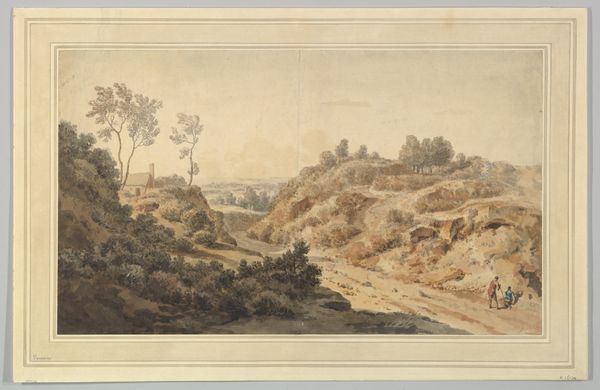
Copyright: CC0 1.0
Curator: Gazing at Donald Shaw MacLaughlan’s etching, "Road Song, no. 3," I feel an odd sense of longing, like catching the tail end of someone else's memory. Editor: Memory, yes, but also, isn't there something inherently performative about this image? MacLaughlan, active in the early 20th century, seems to be consciously evoking the tropes of the wandering artist. Curator: A 'trope,' you say? I see a solitary figure finding solace under a lone tree. The etched lines almost vibrate with a quiet energy. Editor: But that "quiet energy" is deliberately constructed! The slightly askew angle, the picturesque tree—it's all carefully arranged to communicate a certain bohemian ethos to a bourgeois audience. Curator: Perhaps. Yet, even through the lens of performance, there’s a raw, authentic connection to nature, a sense of being utterly present in that moment on the road. Editor: I concede that it's beautifully executed. The question is, what kind of road is MacLaughlan inviting us to travel? And for whose benefit is this journey staged? Curator: It's a road that leads inward, wouldn’t you agree? Even a staged journey can lead to real self-discovery, I think. Editor: True. Artifice doesn't negate feeling, does it? Thanks for the chat! Curator: Anytime!
Comments
No comments
Be the first to comment and join the conversation on the ultimate creative platform.
